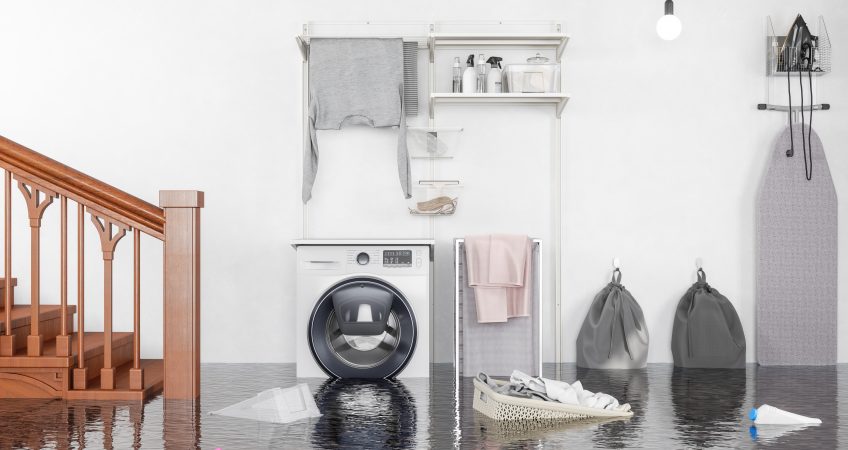It was 1’o’clock in the morning when our black tabby cat tip-toed his way across our backs bringing us out of a dead sleep. It wasn’t just unusual that the cat was walking on us but his feet were wet! What was going on? We rolled out of bed and headed for the basement, where everything but the litter box was floating.
When we talk with customers about wet basements we truly know the frustration they are experiencing. The frustration isn’t just in the moment of the flood; it’s in the overwhelming task of getting the water out; the miserable task of removing and drying soaked household items; the musty moldy smell left behind and the pitting feeling in your gut every time a week of rain is in the forecast.
When you realize a coat of masonry waterproofing paint isn’t the answer to your problem, think about these common water logging issues:
- Where do your downspout drain to? Are they getting the water far enough away from your house to divert the water from your foundation altogether? Think about this – it is possible to have 600 gallons of watershed off a 1,000 square foot roof with just 1” of rain!
- Excavator tip: connecting your downspouts to pipes under the surface of your yard is one way to move water a greater distance from your foundation to an area where large quantities of rainwater can flow without causing destruction to your home or yard.
- What is the grade like around your house? In other words, is the lay of the land moving rain runoff towards your home’s foundation or away from it?
- Excavator tip: creating swells, or slightly raised areas, in your yard may completely divert water from running towards your basement walls. Swells can easily be blended into your landscape so that they are functional, not noticeable.
- Excavator tip: If you are having trouble ‘eye-balling’ the grade of our yard call an excavator. Your excavator can use a transit to calculate the grade (levelness) of your yard.
- What is
the health of your footer drain? Most homes have a footer drain which was constructed
when the foundation was built. This is basically a ditch round the outside of
your basement wall that was filled with stone to create a pathway for water to
move away from your home’s basement. But footer drains can fail for multiple
reasons, such as:
- They can be overwhelmed (and flood) by having too much water runoff from your roof and yard (refer to the bullet points above).
- They can collapse if the contractor did not place a sufficient quantity of stone in the ditch.
- They can become clogged if someone decided to run your home’s downspouts into the footer drain (yes, we’ve seen it). Debris from your spouts, as well as the cinders from your shingles, fill the stone bed until it can no longer function as a drain.
Diverting water from you foundation walls sometimes takes several steps because drainage problems often come from a combination of issues. Working with an experienced and reputable residential excavator will help you identify and address the root cause of your wet worries quickly. We realize these types of home improvement projects are not as exciting making a patio or an outdoor kitchen. But the peace of mind that comes with knowing your basement will stay dry during the soggiest seasons is irreplaceable. Don’t let the pitter-patter of rain on your roof keep you awake at night. Call us for friendly consultation.

